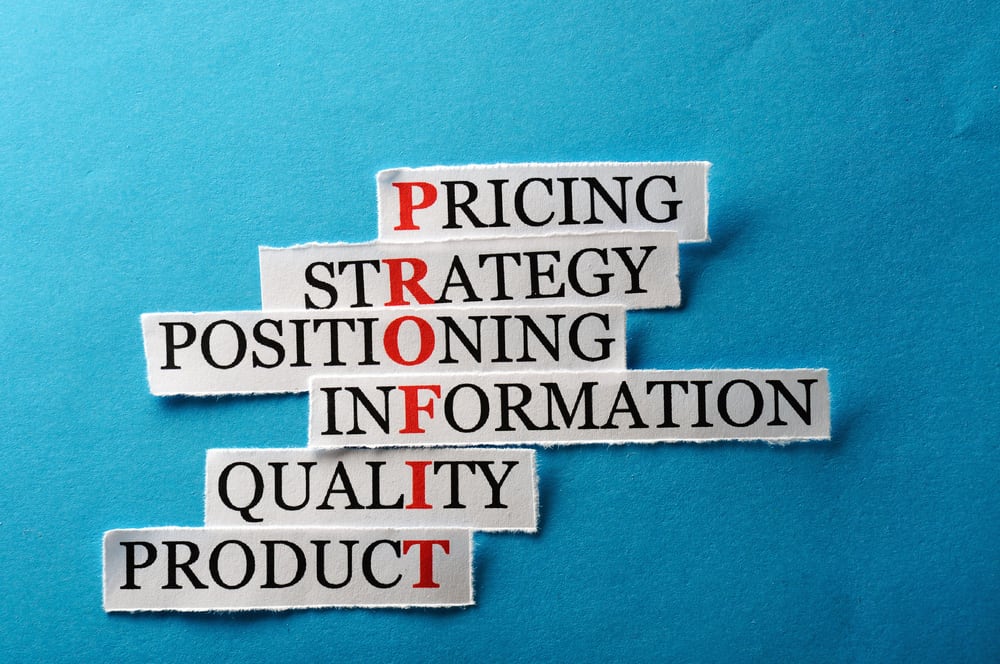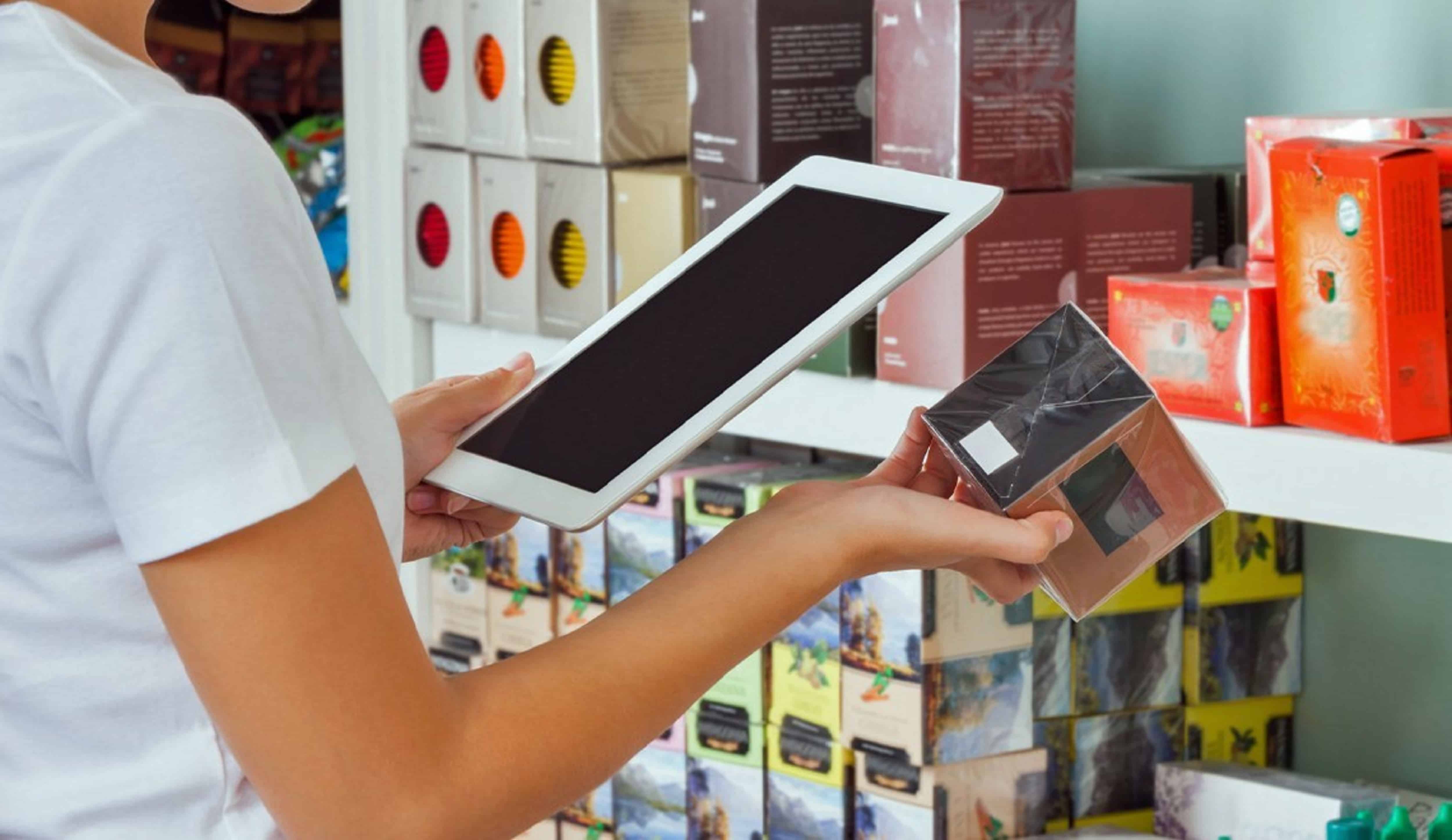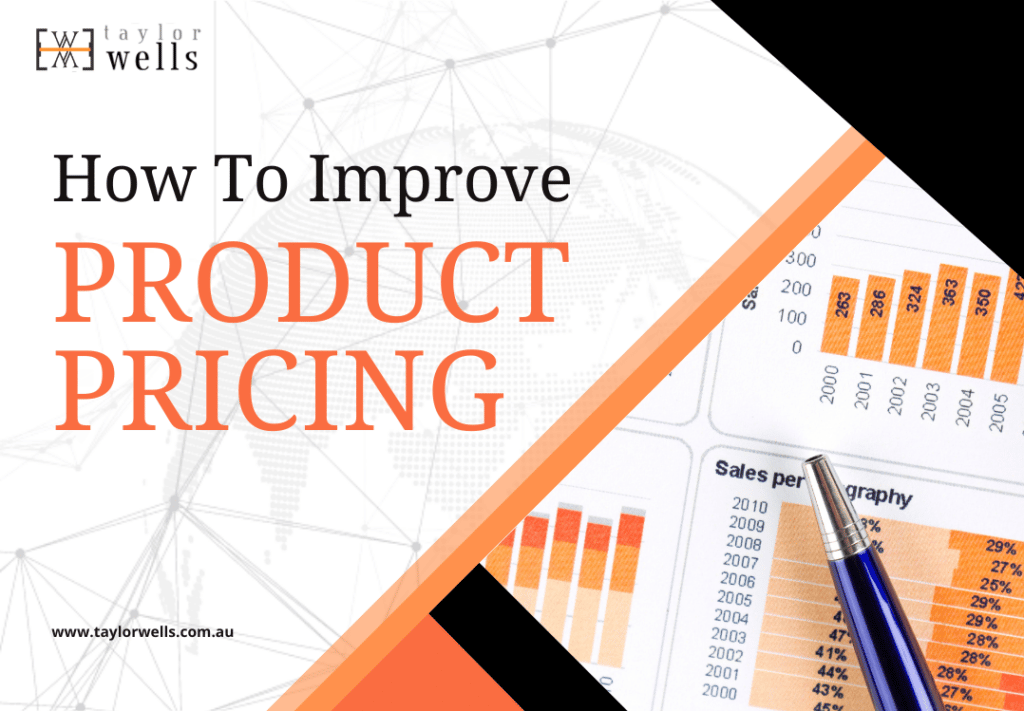
FMCG Pricing Strategy: How to Double Pricing Power In A Depressed Market 💉
Key Account Manager: Are You Armed With a Strong Pricing Strategy? 🔩What’s the best FMCG pricing strategy in a depressed market?
FMCG sales make up for more than half of all consumer spending. Meaning, that more than 50% of what consumers spend goes on FMCG goods. According to BEA (Bureau of Economic Analysis), the amount of money going to FMCG organisations was $13 trillion in the second quarter of 2020. However, that’s down by 34.6% compared to the first quarter of this year, which was already down by 6.9% from 2019. But, the strange thing is that in spite of the large amount of money we’re all spending on grocery goods each quarter, FMCG organisations profit margins are surprisingly slim, averaging at 3-10%.
>Download Now: Free PDF How to Improve Product Pricing
We’re keen to find out why fmcg margins are so low when grocery spend is so high? So, in this series of articles, we will continue to evaluate FMCG pricing strategy and financials to date – looking closely at the key pricing issues leading to consistently margin erosion. We’ll be asking the questions: What is the best FMCG pricing strategy to safely double pricing power in a depressed market? Is there a better way to maximise margins using pricing other than ‘push’ promotions and deep discounting?
At Taylor Wells we believe that demand-based pricing or customer-focused pricing are better alternatives to the existing FMCG pricing strategy. We also think the time has come to cut expenses by optimising the whole trade spend system.
Table of Contents:
I. How To Double Pricing Power With FMCG Pricing Strategy
II. Pricing Strategy For FMCG Retail Suppliers With No More Trade Spend To Give

How To Double Pricing Power With FMCG Pricing Strategy
FMCG pricing strategy is based on “last” generation supermarketing retailing
The first area ripe for FMCG pricing strategy transformation is existing FMCG channel strategy and go to market process. It would be safe to say, that most FMCG pricing strategy is still focused on an old-fashioned dysfunctional relationship with their retail customers. To the extent that now most leading FMCG suppliers haven’t got or haven’t yet implemented a direct to market, online channel strategy to serve a rapidly growing customer base (currently equalling 20-30% of total sales).
To be fair, though, c.60-70% of all FMCG sales for major suppliers still go through major, brick-and-mortar supermarket channels; and the rest goes through IGA and/or smaller independents. Direct to market sales using online is still a new concept in fmcg institutions. Which means leading fmcg institutions are still relying on old fashioned selling techniques to win major contracts with their supermarket customers rather than data and analytics on pricing and consumer trends. Not only does this indicate that fmcg suppliers are commercially led organisations rather than pricing organisations, there’s likely to be wide variations in B2B deal pricing resulting from some level of discretionary pricing.
As a result of current operations, therefore, suppliers are hamstrung by their own outdated channel strategy and sales based pricing approach and retail customers can’t get the consumer data and pricing insights they need from fmcg suppliers because they simply don’t have them. However, nothing lasts forever – even onerous contracts expire – and the world moves on. Leading FMCG institutions should take note of how quickly consumers have taken to online buying in the recent months, and get serious about completing an integrated transformation.
FMCG pricing strategy is inward-looking and has lost its edge in the market
At present, online purchases account for 30% and still growing. People are buying products online such as bags, shoes, shirts, household stuff and groceries. New, smaller entrants are taking a share of the market from leading FMCG suppliers.
For example, if you compare consumer pricing and retail trends with grocery trends, you can clearly see consumers across the board like to buy pretty much everything they can online (people are even prepared to pay for very expensive, fine jewellery online since COVID – a totally new consumer trend).
In fact, since COVID, more fashion apparel suppliers than ever before have been going direct to market. Smaller fashion apparel suppliers with unique offers are looking at alternative channels to market other than the department store or third party aggregator sites to promote and sell their goods to the end consumer. They are looking to online, social media, social influencers, smaller boutique outlets that match their brands etc.
The same pattern is occurring in fmcg with smaller fmcg suppliers.
For example, below listed are 10 profitable FMCG organisations that have taken share from leading FMCG suppliers across different categories by leveraging their online capability and independent sales and marketing strategy.
1. Pangkarra
Wholegrain wheat products, pasta, breads and pulses.
2. Roza’s Gourmet sources
Premium, handmade sauces for those with food intolerances.
3. Nexba
Homemade-style iced tea.
4. Popina
Clusters and muesli makers.
5. Mayver’s
Peanut butters and nut spreads.
6. Slim Secrets
Healthy, convenient snacks.
7. Cocofrio
Dairy-free ice cream.
8. Schibello Caffe
Italian-style coffee beans and makers.
9. Frosty Boy
Frozen desserts and beverages.
10. Sodastream
Fizzy drinks machines and flavourings.
Pangkarra – no. 1 on the list – is a prime example of a small FMCG business that has deliberately chosen not to go through major supermarkets and selling products with higher price premiums than supermarkets.
Interestingly, Pangkarra have stated that they have no intention to work with Coles or Woolies. Their strategy is to keep their brand for the 20% of Australians that don’t want to shop at Coles and Woolies. From marketing and pricing perspectives, they are keeping their brand exclusive, investing in online to reach people who intentionally shop elsewhere and who are willing to pay a price premium for doing so.
FMCG pricing strategy is very tactical and does not utilise trade spending effectively
The third area ripe for FMCG pricing strategy transformation is trade spend investment in unnecessary promotions and needlessly excessive discounting. Trade spending – the financial deals that FMCG suppliers offer retailers to market their products – stands at an all-time high for FMCG companies, despite their underwhelming results in terms of generating more profitable sales or capitalising on product innovation.
On average more than 30 per cent of the price that consumers pay for a product goes to retailers in terms of trade deals. There is also a large price variation between categories that gives retailers a lot of room to discount products further. All of this cuts FMCG suppliers’ profits and undermines premium brands. Especially, when prices go below the prices consumers are willing to pay (i.e., consumer reference prices).
Many fmcg companies say they have tried to optimise trade spend to improve the situation with retailers. However, very few have taken a comprehensive approach to trade spend. Namely, clearly defining and analysing the whole “price waterfall” as the money flows from the consumers and shoppers to the retailer and then to them – the manufacturer.
FMCG pricing strategy and culture is resistance to change
The fourth area ripe for fmcg pricing strategy transformation is company culture. According to a recent study, CEO Viewpoint 2017: The Transformation of Retail, they found that most FMCGs view digital transformation as critical. However, their strategy, planning and implementation are much slower than desired.
The three biggest barriers to digital transformation based on the survey are:
69% – the IT team’s ability to deliver on the strategy
67% – lack of leadership to define a digital transformation strategy
64 % – lack of the pre-requisite skills to execute on the strategy
What is clear from this study and our consulting experience is that the FMCG industry still faces challenges with managing change and ensuring that business transformations lead to meaningful outcomes. Lead times, delays in implementation, and skills shortages are often the major factors that discourage FMCGs from seeing a pricing transformation through to a successful conclusion. Not only that but another obstacle was the cost of new IT and pricing system – and the associated costing of training and enabling teams to deliver digital transformation outcomes.
Key learning: Discounting is not the only solution to drive volumes and revenue
Continuously promoting products using a rigid cost plus pricing strategy that favours traditional channels to market and excessive and frequent discounting across all product categories is a tough strategy to implement in a disrupted and competitive retailing environment. And one which is leading to year on year category decline and margin erosion for major snack and food brands. All signs above indicate that current fmcg pricing strategy will lead to year on year profit decline for major fmcg institutions and year on year growth for smaller fmcg businesses.
Taylor Wells believes better alternatives to current fmcg pricing strategy is demand-based pricing or customer-focused pricing. We also believe the time is right to reduce costs by optimising the entire trade spend system.
A clear winning advantage of using a consumer-oriented approach to fmcg pricing strategy is that it provides a dashboard of a products profitability. From here, you can see what products consumers and shoppers value – you’ll understand what they are willing to pay now and can anticipate if this is likely to increase or decrease based on analytics. It’ll also be possible to see if there are SKUS in your assortment that are not selling well compared to others. At this point, you can then test if lowering the price increases consumer demand. You can then track promotions systematically and reevaluate products based on price and consumer data. Or change product specifications if need be.
>>>Read about: Key Account Manager: Are You Armed With a Strong Pricing Strategy? 🔩
Tips on How FMCG Can double their pricing power – Even In a Depressed Market
We all know that one of the most challenging tasks that FMCGs face is price optimisation. Setting a price that will boost penetration and sales growth is not an easy task for FMCG organisations. Especially those that are tied to cost-plus pricing and sales led price negotiations. However, there are numerous pricing methods that FMCG sales and pricing teams can use to help the business double their pricing power even in depressed markets. Below listed are some tips to help start the journey to a customer-focused pricing strategy:
Customer willingness-to-pay
In pricing a product or service, it is important that you understand customer’s willingness-to-pay.
Customers have a minimum and maximum price they are willing to pay for a product or service. If the price is closer to the customer’s reference price (maximum/minimum price thresholds), the consumers’ uncertainty to buy is lower. If, on the other hand, you want customers to pay more for products than their reference point indicates, this will take additional investment in marketing, advertising or promotions.
Assortment enhancement
For this approach, understanding the customer’s willingness to pay is also significant. You have to use consumer and price research to understand the differences in willingness-to-pay for the items in an assortment. Then you need to use this insight to inform your segmentation strategy. Segmentation is crucial to price optimisation to ensure you set the correct price bands across different products and customer groups.
Customer value-drivers
Value drivers are the unique motivators that your customers have in their minds when they buy your products. As an FMCG business, then, you want to identify the unique reasons/drivers why your retailer customers and end consumers and shoppers buy your products. And not just the features or benefits of your products, but also the reasons why shoppers buy your products versus other like products. How do they consume your products? What are they trying to avoid by buying your products? Do customer value drivers vary across different groups (you’ll only know this if you’ve got your segmentation in order)?
This discovery exercise is important because you’ll find out what and why your customer value your products. What’s more, you can use this insight to add depth and evidence to your price ladders and price-setting process. You’ll also be able to understand the aspects that don’t influence your customer’s willingness to pay or the elements that in fact cap spend. And when you do, stop marketing them to customers because its a wasted investment.
Price Increases
Prices should not be fixed or based on cost plus methodology. In order to protect profits, FMCG companies want to increase their prices at least once a year. It is best practice to raise prices regularly so retailers get used to the new norm. Especially when they see it benefits them financially and customers respond well. However, all price rises have to be optimised. This means informed by various inputs, such as: competition, sales trends, inflation, cost of production, freight, consumer perception, value driver analysis, product innovation and brand positioning.
Promotions
Recognise consumers’ possible reaction to different promotional methods or discount levels, and optimise overall revenue. Increased promotions can destroy value not create it. The reason is, sometimes the increase in volume does not compensate for the price reduction.
Promotions that merely shift-share on a weekly basis do not boost consumption at all. Rather, blanket promotions tend to result in lower margin for the retailer and manufacturer.
Consider instead setting optimal levels of discounting, frequency and support in-store to determine your next promotion. Seek to understand which lines are the right products to discount or promote. Consider also which – when promoted – will actually drive incremental sales and margin over their baseline sales.
Price and promotion, more than ever, are moving and dynamic processes with personalisation underpinning everything.
Implications
- Trade spend is central to pricing strategy and go-to-market execution processes.
- You can’t just change one or two elements of trade spend and expect long-lasting results with your pricing strategy.
- Consumers are responding differently to prices as a result of the crisis. Grocers, mass retailers, convenience stores will need to carefully refine their pricing strategies to create and capture value.
- Smaller fmcg suppliers and new entrants are leading the way with online capability and pricing with leading suppliers lagging behind in many respects.
- Smaller brands now represent almost one third in the fmcg industry because they have leveraged technology to their advantage and have an online capability that surpasses many leading fmcg suppliers.
- FMCG suppliers urgently need a new operating model that meets today’s and tomorrow’s needs as the one they are using now is antiquated and in many respects broken.
- Use the consumer price point, rather than the wholesales price (current practice) to drive all subsequent discounting to the retailer.
- Sales should be negotiating terms with retailers based on the net prices realised after all discounts and promotions – as this is a more realistic picture of profitability for the retail and manufacturer.
〉〉〉 Get Your FREE Pricing Audit 〉〉〉
Conclusion
The current crisis has highlighted a lot of room for price improvement in the FMCG industry. A striking improvement area is reducing the often unnecessary high costs associated with largely unnecessary promotions. Over the past 4 months, we have witnessed widespread and deep discounting across most food categories to drive volume. Promotional cost has skyrocketed and FMCG organisations are now struggling to recoup their losses. It is commonplace now to see 50%+ promotions on offer almost every week for even higher value items. Same goes for habitual everyday items. This is not a sustainable or prudent FMCG pricing strategy. What’s more, it’s totally misaligned to retail customers and consumer needs.
From our consulting work with FMCG organisations, it is clear that fmcg leaders have to make up their minds: Do they want to eliminate isolated weaknesses or benefit from an integrated transformation that will get their strategy, people and operations as a whole in shape for the future? To avoid piecemeal pricing solutions, management should develop a fundamentally new, all-encompassing vision for creating and capturing value, which includes a new operating model for pricing.
It is time to stop wasting excessive resources on temporary problems using quick-fix trade spend solutions. Because in many respects FMCG companies are limiting their own pricing power using largely outdated and ineffective trade spend including promotional strategies when they could be using this time to re-set prices and value using a customer-focused FMCG pricing strategy.
Click here to download a whitepaper on driving pricing strategy.

Pricing Strategy For FMCG Retail Suppliers With No More Trade Spend To Give
Australians have a reputation for being savvy bargain-hunters, and discounts are one of the best ways to get their attention. Offering consumers FMCG pricing discounts and enticing price promotions are effective ways for supermarkets and suppliers alike to attract shoppers to their brand and to drive sales quickly. Little wonder then why major supermarket retailers heavily rely on trade spend from their suppliers to bolster their promotions. Not only does trade spend drive sales, it also guarantees supermarket a significant chunk of their margins each year – a very comfortable, low risk and profitable position for supermarkets.
The problem is though, many FMCG suppliers in Australia have to fully fund supermarket promotions and discounts at the request of the supermarket. Often these promotions are loss making for the supplier and profitable for the supermarket who make a cut both ways. Suppliers often feel they have no choice but to comply with supermarkets in this regard because they want to maintain their ‘relationship’ with the supermarket and keep hold of their shelf space and positioning.
One could argue that these suppliers also have the choice to leave the Australian market or indeed work with different supermarkets or channels; and an increasing number are doing just that. But recently we’ve seen suppliers that are refusing to do either of these things.
What are they doing differently to the rest to change this legacy FMCG supermarket pricing environment?
In this article, we are going to discuss a case study on Dilmah Tea – a FMCG supplier to major supermarkets that was recently in the press for refusing to fund heavily discounted promotions on their tea products. We argue that lowering prices is not the only way to increase market share, and a long-term profit decline can still be reversed.
At Taylor Wells, we believe that FMCG suppliers suffering from profit loss can protect themselves and their pricing strategies with supermarkets through product and brand development, customer segmentation and strategic pricing. By the end, you’ll know the important strategies and approaches needed to get your cash flow and profitability back on track.
FMCG Retail Product Supplier Pricing And Marketing Strategy
According to studies, more than four-fifths of Australians made an impulse purchase as a direct result of a discount, promotion or sale in the past year. Many shoppers also report that they actively seek out discounts before they buy items online or in-store. This could be attributed to the high cost of living in Australia and/or because shoppers have been trained by retailers to seek and ask for discounts before they buy.
Unfortunately, not all FMCG suppliers have the ability or funds to offer sizeable and frequent discounts and sales. This can be a major disadvantage for suppliers when it comes to competing with others who can offer these incentives. When retailers and customers are looking for a good deal, they may turn to other ‘trusted’ suppliers that can provide discounts or special offers without a fight or question.
Dilmah Tea has been operating at a loss in Australia since 2009 according to the company’s CEO, Dilhan Fernando.
The relationship between suppliers and retailers can be complex. If the two parties fail to work together in an efficient and professional way, it can lead to a range of problems. Common issues include miscommunication over pricing and product information, misunderstandings with delivery schedules, or disagreements over terms and conditions.
Much of Dilmah’s problem can be traced back to legacy pricing and trade spending habits in Australia. Major supermarkets and retailers are demanding suppliers like Dilmah Tea fund excessive discounts and promotions of up to 70 to 80 per cent to remain on supermarket shelves.
The upsurge in trade spending has been mainly driven by retailer consolidation, the displacement of smaller, independent businesses by larger formats, competition from private labels for shelf space, and a messy marketing landscape. All of these make it harder to create direct consumer demand.
Spending on what we may refer to as “push efforts”—including deep discounts and price promotions—that encourage consumers to buy a specific product—is increasing. There are ever-fewer “pull efforts”—services and marketing, such as cooperative advertising—that entice customers to walk into a store and ask for a product. Push tactics are problematic since they not only reduce revenues but, in cases of bad implementation, also encourage customers to rely on discount rates.
The reality is that supermarkets frequently treat their suppliers as third-party vendors rather than as an essential part of a partnership. Numerous suppliers have attempted to enhance their trade spending policies and dealings with retailers, but few have succeeded in doing so in a way that has resulted in lasting improvements.
In Dilmah’s case, the company could exit the Australian market of course.
However, the CEO states clearly that this is not going to happen. In fact, he refuses to do this even though he quite rightly knows how the Australian public has been brought up and trained by retailers to seek discounts before they buy.
The reason for Dilmah remaining in Australia is largely an emotional one. The CEO says he feels a “debt of gratitude” to Australians. Dilmah Tea grew their business in the Australian market, and their past success was largely a result of their growth in Australia. What can the company do? The only option is to make efforts to revitalise the business.
Discussion On Developing FMCG Pricing And Marketing Strategy Without Offering Discounts
Dilmah Tea is one of Australia’s leading tea brands, having been established in 1990. As a family-owned and operated business, Dilmah takes great pride in ensuring every cup of tea it serves meets the highest standards for taste and quality.
However, since 2010 Dilmah’s market share in Australia has decreased by half, jeopardising its future in the country. Nevertheless, the company is optimistic that recent negotiations with supermarkets, marketing and PR plans, and consumer support will help change their circumstances.
Dilmah Tea appears to be very adamant about sticking with its long-standing company values and FMCG pricing strategy. The CEO stated that they would not compromise on quality in order to provide the substantial discounts that retailers demand. He said that they must make significant investments to ensure the sustainability of their products, the integration of worker and community livelihoods, and participation in combating climate change.
A key FMCG strategy for Dilmah Tea appears to be in product and brand development, customer segmentation, and strategic pricing.
They’ll be carefully assessing their product lines to see whether there’s any room for development or optimisation, such as the introduction of new product varieties, deleting unpopular lines, entry into new markets or price optimisation.
As they seek to make a break from legacy FMCG pricing and trade spend practices in Australia, focusing on the value they deliver across the value chain and building strategic price structures will be key to reigniting revenue streams in Australia. This is actually a bold and admirable move from Dilmah Tea in a coffee-obsessed nation.
Implications Of Trade-Spend Optimisation To FMCG Retail Supplier Pricing Strategy
Suppliers that can’t offer huge discounts need to optimise trade spending policies in order to remain competitive in a rapidly changing market. How can suppliers improve their trade spending policies and process? Prioritising trade partners and selling channels should come first. Consider focusing on partners who are willing to participate in brand-building activities. Then, evaluate how you can manage each of the formats and channels you have chosen.
Develop a brand strategy. Understanding how your brands are valued within the brand portfolio of the retailer is crucial. Which products do you wish to highlight so that more people will recognise the brand? After that, create effective management systems for your product portfolio across all distribution channels and business partners. It is crucial that you organise the product portfolio so that retailers can consistently communicate the brand message and price-value equation to consumers.
Trade-spending optimisation is well worth the effort.
Be certain of your objectives before modifying your program. It is not a good idea to revamp all of your product lines, prices, and marketing tactics at once. Do it gradually. Make sure there is a clear understanding with retailers before you start implementing a new trade-spending system.
Enhancing trade spending should be a bottom-up process that involves understanding the histories, margins, bargaining styles, and pricing norms of trading partners. It could be necessary to set up new procedures and roles, like a pricing team to connect trade spending to the other components of the go-to-market plan. Marketing, sales, finance, production, and logistics are all impacted by pricing.
Make sure to have a high performance pricing team to oversee the process of trade spending optimisation and price setting development.
In fact, our findings show that with the right set-up and pricing team in place, incremental earnings gains can begin to occur in less than 12 weeks. After 6 months, the team can capture at least 1.0-3.25% more margin using better price management processes. After 9-12 months, businesses often generate between 7-11% additional margin each year as they identify more complex and previously unrealised opportunities, efficiencies, and risks.
A pricing team can provide a range of services. They can assess the current product and service offerings, review competitor pricing, develop competitive strategies, monitor changing customer needs, and analyse price elasticity. Additionally, they can determine the most effective methods for setting prices such as market segmentation and value-based pricing.
Business operations become unsustainable when organisational functions are fragmented. Our findings also show that when a business builds and embeds commercial capability across the business; bolstering its internal pricing skills and capabilities to build a sustainable pricing system, it can generate at least 3-10% additional margin each year while protecting hard-earned revenue and volume. This is at least a 30-60% profit improvement straight to the bottom line.
〉〉〉 Get Your FREE Pricing Audit 〉〉〉
Bottomline
When it comes to trade spending, FMCG suppliers and retailers don’t necessarily have to be on opposite sides. It’s wise for Dilmah Tea to resist supermarket demands for discounts. Too much discounting depletes resources for both suppliers and supermarkets.
The truth is that consistent value-based prices and margins are crucial not just because they allow for growth investments like product improvements and marketing, but also because they support the development of a recognisable brand identity. Because consumers become less price sensitive as a result of a solid brand reputation, demand grows more steadily. The key is to establish that your products are what consumers want and need.
Strategic pricing and product development can be powerful tools for both suppliers and supermarkets to combat profit loss.
Building commercial capability is a key strategy for any company looking to reverse losses in profits, like Dilmah Tea. By developing an understanding of the marketplace and customer needs, businesses can optimise their product offerings and marketing strategies. A pricing team can work with marketing and sales teams to ensure that pricing is used effectively in promotion activities and aligns with business objectives. By leveraging a pricing team’s expertise and experience, companies like Dilmah Tea can make the FMCG pricing decisions necessary to return to profitability.
For a comprehensive view and marketing research on integrating a high-performing capability team in your company,
Download a complimentary whitepaper on How To Maximise Margins.
Are you a business in need of help to align your pricing strategy, people and operations to deliver an immediate impact on profit?
If so, please call (+61) 2 9000 1115.
You can also email us at team@taylorwells.com.au if you have any further questions.
Make your pricing world-class!
Related Posts
Leave a Reply Cancel reply
Categories
- marketing strategy (26)
- Organisational Design (14)
- Podcast (114)
- Pricing Capability (87)
- Pricing Career Advice (10)
- Pricing Recruitment (19)
- Pricing Strategy (287)
- Pricing Team Skills (13)
- Pricing Teams & Culture (24)
- Pricing Transformation (47)
- Revenue Model (25)
- Sales Effectiveness (27)
- Talent Management (7)
- Technical Pricing Skills (35)







